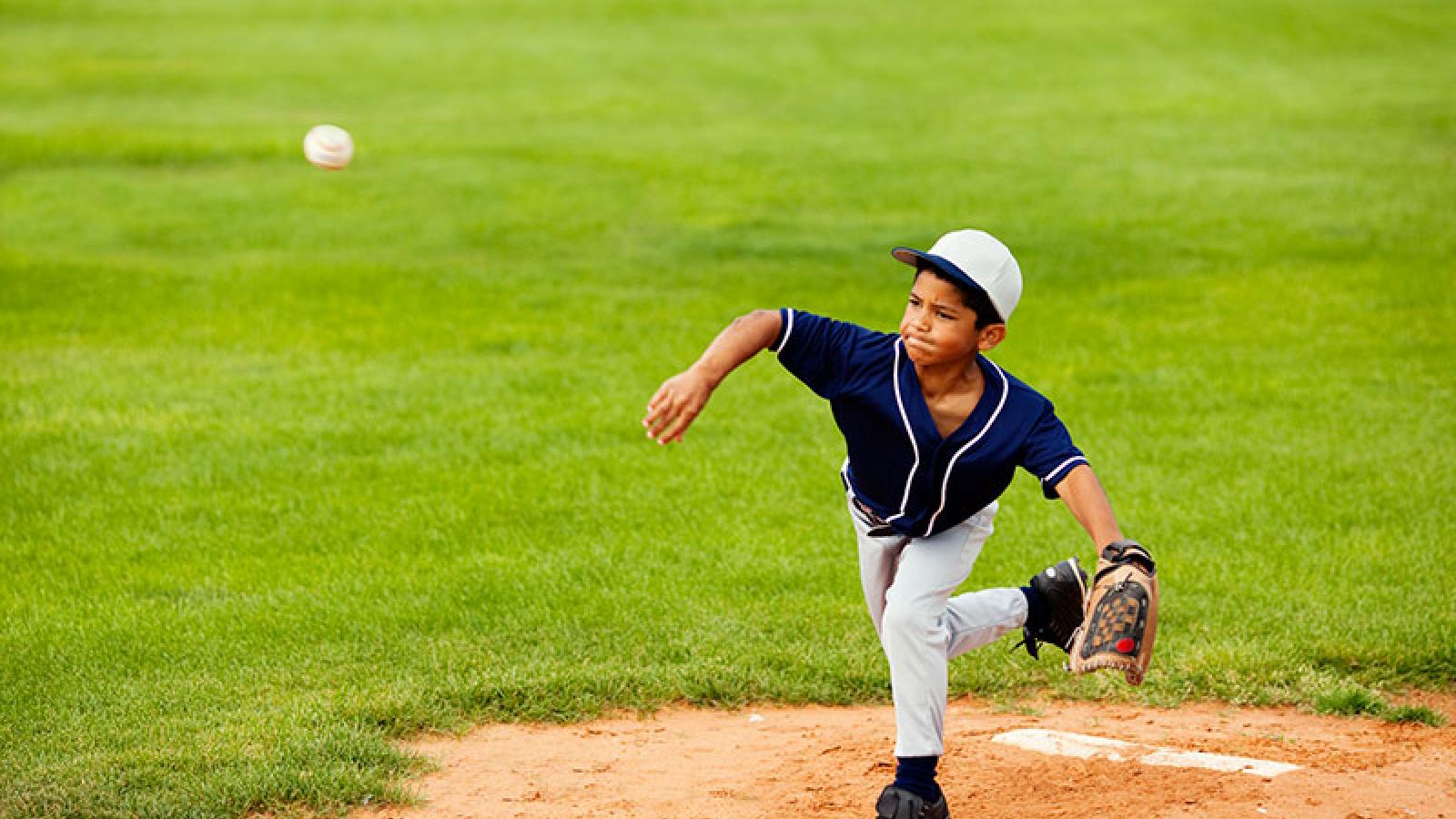How to Prevent Little League Elbow

Little League elbow is an overuse injury that can be prevented. Here's how.
Little League elbow is an overuse injury of the elbow, usually caused by repetitive throwing. Elbow pain can be accompanied by strains, ligament damage or bone injury. Young athletes between the ages of 8 and 15 who participate in throwing sports such as baseball are most prone to this injury. It is typically seen in pitchers but may also occur in catchers and other fielders.
The most common symptom is pain on the inside of the elbow. Other symptoms include reduced range of motion and locking of the elbow joint. If a child or teen experiences any of these symptoms, he or she should stop throwing to rest the joint.
How to Prevent Little League Elbow
The best way to prevent Little League elbow during in-season play is to limit the number of pitches young athletes throw each week during practice and competitive play.
Follow these guidelines:
- 75 pitches for 8- to 10-year-olds
- 100 pitches for 11- to 12-year-olds
- 125 pitches for 13- to 14-year-olds
In addition, young pitchers should play only three to four innings each game.
It's important for parents and coaches to carefully monitor throwing athletes.
Rest and proper training usually take care of most elbow pain, but not always. Strength deficits in a player's core, shoulder and rotator cuff can contribute to injury, so athletes should concentrate on building core strength as well as shoulder and rotator cuff muscles to help prevent injury.
During the off-season, young baseball players should rest at least 8 to 12 weeks to prevent overuse injuries.
How to Treat Little League Elbow
Little League elbow can become serious if left untreated. Repeated pulling can tear ligaments and tendons away from the bone and cause small bone fragments to pull away, too. This can interfere with bone growth and deform the bone.
According to the American Academy of Orthopedic Surgeons, most cases of Little League elbow can be treated without surgery. The following strategies may ease pain and address other issues associated with this injury:
- Rest the elbow. It's important that young athletes stop throwing for a period of time to allow the injured area to heal. This helps prevent further injury.
- Apply ice. Reduce swelling and inflammation with an ice pack. Nonsteroidal anti-inflammatory drugs may also help reduce inflammation but should not be needed if the athlete takes a rest from activity.
- Don't ignore recurring pain. If pain continues after a few days of rest or starts again after the child resumes throwing, it may be time to see a doctor to determine if further treatment is needed.
- Consider rehab. Exercises to help improve the elbow's range of motion as well as to strengthen the forearm, upper arm, shoulder, back and core can be beneficial.
- Examine mechanics. Once your child is ready to resume throwing, talk to your child's coach about his or her throwing technique and make adjustments if necessary.
Sports Medicine at Guthrie
When an injury strikes, we understand how important a fast recovery is to your athlete. That’s why our team of sports medicine caregivers share one common goal – to get our athletes back in the game as quickly and safely as possible.
Our caregivers are equipped to handle a wide variety of sports injuries, offering injury evaluation, concussion management, physical therapy, surgical procedures and more. In addition to the vast network of Guthrie providers across numerous specialties, we can ensure your athlete receives the best care possible, no matter the condition.
Copyright 2016-2023 © Baldwin Publishing, Inc. Health eCooks™ is a designated trademark of Baldwin Publishing, Inc. Cook eKitchen™ is a designated trademark of Baldwin Publishing, Inc. Any duplication or distribution of the information contained herein without the express approval of Baldwin Publishing, Inc. is strictly prohibited.
Date Last Reviewed: January 7, 2020
Editorial Review: Andrea Cohen, Editorial Director, Baldwin Publishing, Inc. Contact Editor
Medical Review: Andrew Overman, DPT, MS, COMT, CSCS
Learn more about Baldwin Publishing Inc. editorial policy, privacy policy, ADA compliance and sponsorship policy.
No information provided by Baldwin Publishing, Inc. in any article is a substitute for medical advice or treatment for any medical condition. Baldwin Publishing, Inc. strongly suggests that you use this information in consultation with your doctor or other health professional. Use or viewing of any Baldwin Publishing, Inc. article signifies your understanding and agreement to the disclaimer and acceptance of these terms of use.

